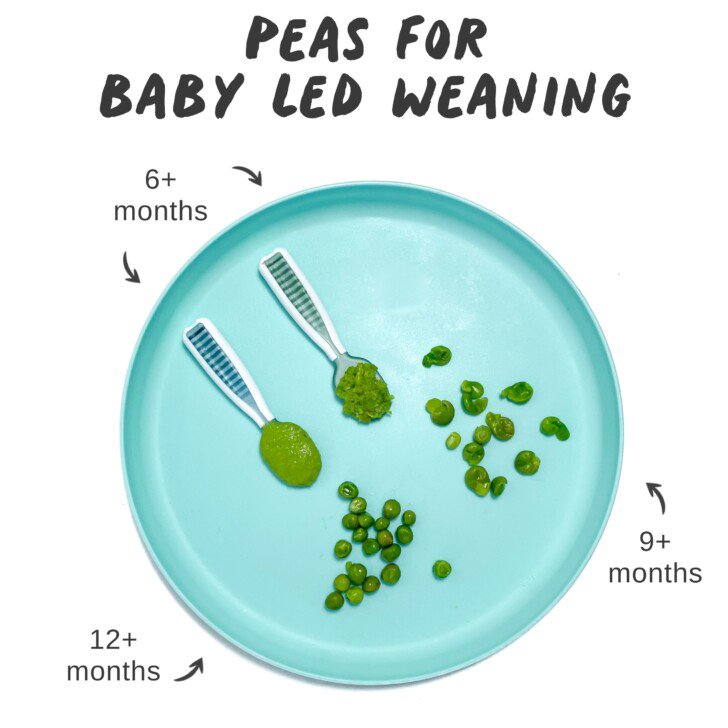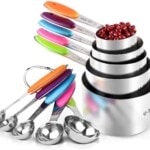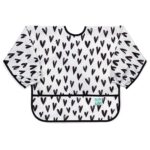
Get the recipe: Peas for Baby-Led Weaning
Learn how to serve peas for baby-led weaning with our helpful guide. A powerful little veggie, peas are full of essential nutrients and fiber. They're perfect for boosting immune function and supporting healthy development in babies and toddlers.
Ingredients
- 1/2 cup peas fresh or frozen
Instructions
- In a medium saucepan, bring 2 inches of water to a boil. Add peas to a steamer basket and place in the saucepan. Cover.
- Steam for 4-6 minutes or until tender. Let cool.
- Flatten with the back of a fork, mash and serve in an age-appropriate way.

Notes
Age: 6+ months
Yield: 4 portions for baby
Storage: you can store the peas in an air-tight container in the fridge for up to 4 days.
Puree for Self-Feeding: Yes, it can be done! You can offer purees and still allow your baby to lead the way with self-feeding. Place a few spoonfuls of purees directly on the tray or in a bowl for your baby to dip fingers into. Model how to dip your fingers into the puree and bring them to your mouth, to taste some. Offer your baby a pre-loaded self-feeding utensil and hold it out for them to grasp or set on their tray. Use a solid food as a dipper. You can also offer a soft stick-shaped piece of food, such as a soft roasted carrot or bread lightly toasted and cut into strips to dip into the puree.
How to Serve Peas for Baby-Led Weaning
Peas can be a choking hazard for your baby, regardless of whether you are doing baby-led weaning starting at 6 months or during the finger foods stage at 9 months, so it is important to cook and serve them properly.
- 6+ months - Mashed or Pureed on Self-Feeding Spoon: Mashed peas have a thicker consistency so will be easy to stick to a self-feeding spoon. Or you can let your baby just dive their hands right in and scoop them up that way.
- 9+ months - Flattened: At 9 months, the pincer grasp is newly developing so flattened peas can give your baby some practice with it.
- 12+ months - Whole: By 12 months, babies will likely be able to handle eating whole peas, and be able to pick them up with a more developed pincer grasp.
Did you make this recipe?
Tag @babyfoode on Instagram and hashtag it #babyfoode!



